What’s one of the first things you do when arriving at a new destination? Likely it would be scoping out the local neighborhood. Getting a sense of its terrain and the good things to do around there.
That’s part of what Rosetta’s team is working on since arriving at its comet early in the morning of Aug. 6 (Eastern time). While only a few pictures have been beamed back to the public so far of Comet 67P/Churyumov-Gerasimenko, the glimpses of its surface are tantalizing. Which is important, because a little spacecraft is on its way there.
As the team busily calibrates its instruments and snaps pictures of the surface, one of their first tasks will be to pick a landing site for Philae, the machine that is scheduled to leave Rosetta and actually touch softly down on the surface in November. This is the first time such a soft-landing has been attempted, and it’s been a long decade of waiting for the scientists who sent the two spacecraft on their way.
Picking a spot will be difficult for the team, they explained last week. The gravity is light and the terrain is not only difficult to navigate, but also hard to choose from. Would you prefer a crater or a cliff? That will be what science investigators will examine in the coming months.
As they do that, check out the latest pictures of the comet in the gallery below.
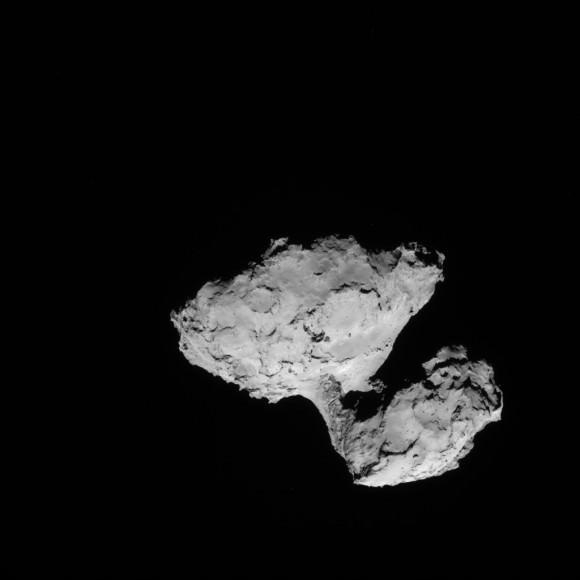
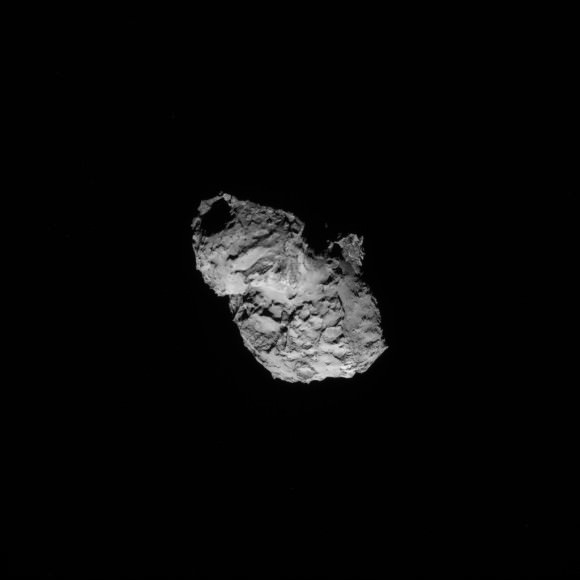
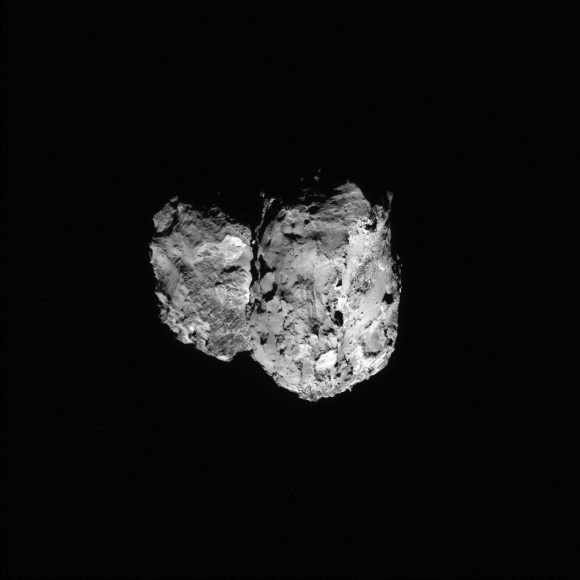
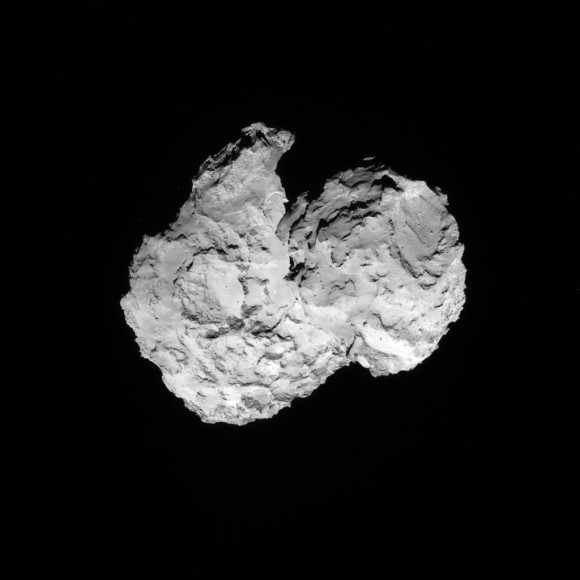

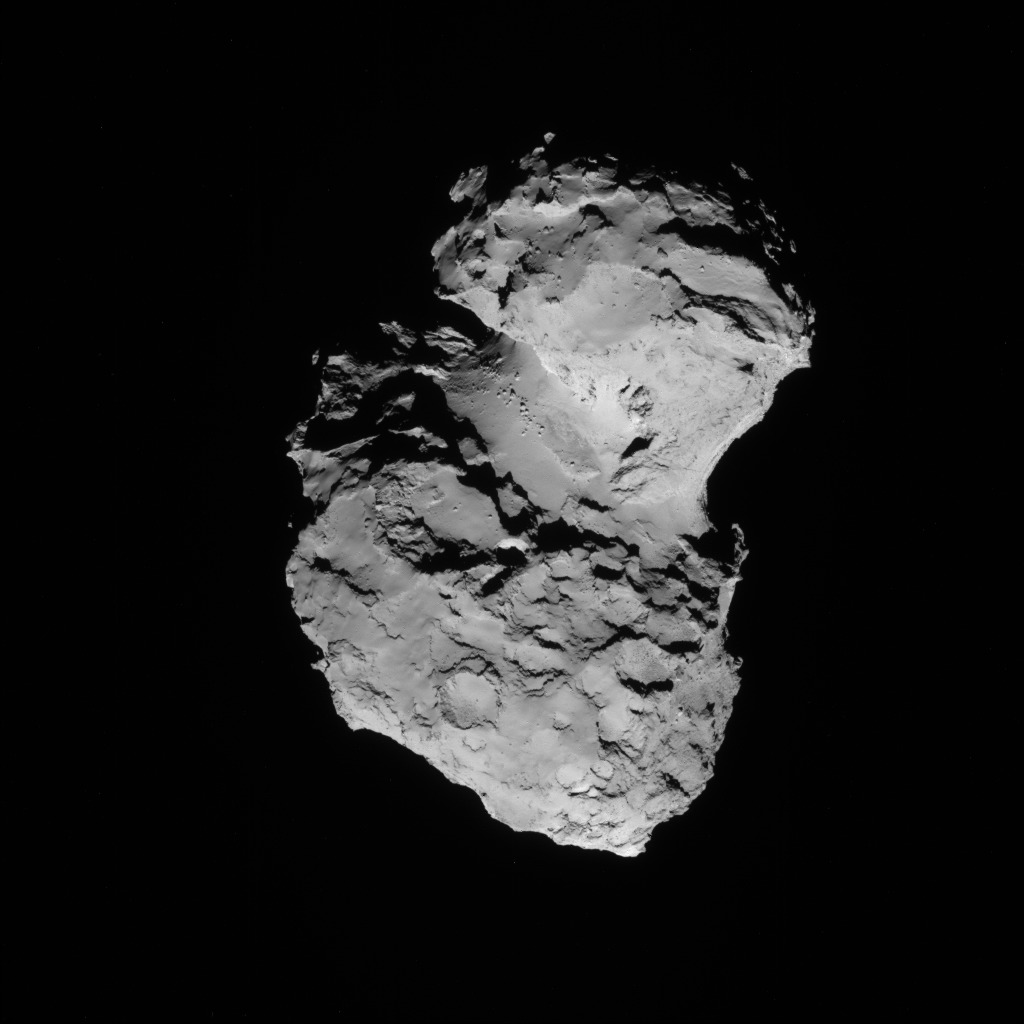
In the second photo from the top here it really does look like the African Nimba mythological figure! So I suppose I can unfortunately answer the question:
“What’s one of the first things you do when arriving at a new destination?”
With: I see a face…
No no, the direct reflection of sunlight fools our eyesight which is used to atmospherically dispersed light instead of totally sharp shadows.
Reaching orbit around this comet P67 is historical, monumental, a first. It is an amazing looking object. But there is only so much real estate to photograph and unique angles, so very soon the curious among us, my hand is raised, will need something more – closer in photos and spectral analysis. From it’s appearance, it seems like a spent comet. It’s a short period comet but its present orbit was only recently modified by Jupiter (1959) to its present closest Sun distance (perihelion) of about 1 & 1/4th the distance from the Earth to the Sun. It doesn’t get very close.
Where did this comet originate? The Oort cloud, Kuiper belt? Will this mission answer all the key questions about comets? This one I can answer: most definitely not. Is this comet’s morphology and chemical makeup typical of all comets? We’ve seen a few comets via fast flybys and studied many from Earth using infrared spectral analysis (identifying chemicals). The answers to the two part question is “no” and “no”.
The array of scientific instruments on Rosetta and Philae are really, really impressive. If you are going on a one-way 10 year journey, you arrive prepared to reap the reward of the long effort to a first ever cometary visit. They did. They have set a standard for rendezvous missions to small bodies (comets, asteroids) but the competitive spirit in science and engineering will soon reduce cost and improve the science return more.
If things go as planned this cometary body will be dissected. Monday morning quarterbacking, here are my thoughts. P67’s orbit and limited temperature rise may have left volatiles with higher boiling temperatures, particularly under the crust. Maybe more water and ethane and larger hydrocarbon molecules have been left behind in the comet. Some or most of the craters are from subsidence not impacts. Some basic spectral analysis will determine if this is a binary object, two distinct objects or just one. During Philae’s descent time to the surface, the comet will make several rotations which should make for an impressive visual ride down and pretty cool computer calculations which must consider approach rate, morphology-terrain avoidance (can’t get hit by the ducks head or the like), synchronize descent rate to rotation rate to arrive at the touchdown point and then take out the transverse speed (relative to rotation). The dusty areas of the comet might not be so interesting to study just like the red martian dust that covers everything on Mars’ surface. But its dusty terrains are safe landing zones. The comet may have a tiny core of frozen water which migrated as a briny liquid to the center over billions of years due to solar flux and impact heat. The radar study might reveal an object peppered with asteroidal material in its upper crust like buck shot.
Excellent, lucid analysis! You’ve compounded my concept of this mission a couple times over with these thoughts! I wish that more comments were this thought provoking.